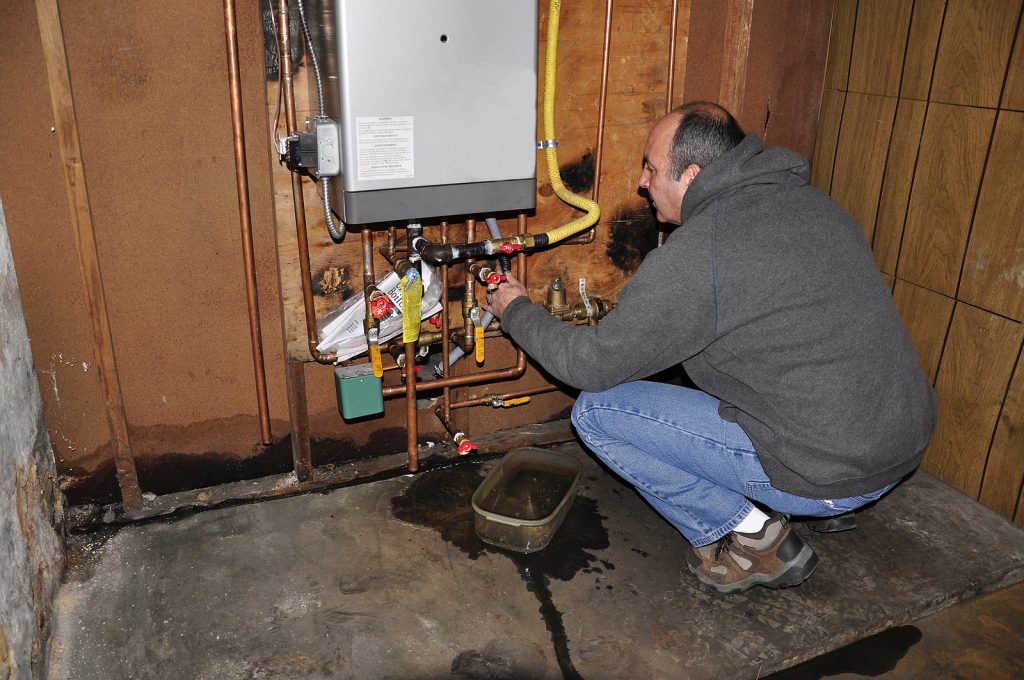How to Inspect and Clean Furnace Intake and Exhaust Pipes
One of the most important things you can do to prepare your home for winter is to have your furnace inspected. If you have not had your furnace looked at recently, now is the time! If you are buying a new home or thinking about selling, this is an absolute must! An inspector will check everything from oil levels to air filters and components of the heat exchanger. What many inspectors do not look at are the furnace’s intake and exhaust pipes.

It is important to inspect these too because they can be a fire hazard if they are clogged with debris or soot from the furnace, as well as cause carbon monoxide poisoning! Carbon monoxide gas can be deadly if it is allowed to accumulate in your home.
How to Inspect Furnace Intake and Exhaust Pipes
First, shut off the power to the furnace at the circuit-breaker box. Look for your furnace intake pipes, which are often white or black PVC pipes that exit a wall close to your furnace. Find where the intake pipes exit on the outside of your house. They are close to where your furnace is on the inside.
Next, use a screwdriver or pliers (depending on how tight it is) to remove the screws around the furnace intake and exhaust vents. This screen can also be removed by hand if you push down on one side while pulling on the other.
Look inside the pipes for debris, rust, or corrosion which can restrict airflow and cause poor heating performance. When this is done, look inside your exhaust vent to see if there are any obstructions, such as bird feathers or nests, which could cause furnace problems later on. If you do find something in there, use caution when removing it. Do not use sharp objects to try and remove the problem because this can puncture or tear metal vents.
If you do find something inside of your intake vent, use caution when removing it. It is a good idea to wear safety goggles and keep a screwdriver nearby in case you need it.
In case your intake pipe has any duct tape on the joints, replace it with steel foil tape. This type of tape will give your furnace more power than duct tape because it completely seals both sides of the joint.
If you can see that your exhaust vent is rusted, corroded, or warped, it will need to be replaced. If there are any holes in the metal surrounding your furnace exhaust vent, this could let carbon monoxide into your house if left unfixed.
It’s always a good idea to hire a professional heating and cooling technician to inspect and clean out your furnace’s intake and exhaust pipes. Most of the time, furnace inspection is just a bonus on top of servicing that you are paying for anyway. By getting your furnace serviced once or twice a year, you will prevent many problems in the future and possibly save money by keeping energy costs down. Contact the trustworthy team at Robert B Payne for top-class furnace maintenance.
Other Things You Can do
Ensure that there is a minimum of five feet of free space around the intake and exhaust pipes. If you have any plants around, cut them. Also, make sure to remove any debris from the area, as well as anything that hangs around. If you don’t have vent screens, ask a professional technician if they are okay for your home or business. It’s encouraged that you check your pipes every two weeks.
Importance of a Professional Tune-Up
A professional furnace tune-up is important for your safety, to improve energy efficiency, and to keep your gas bill down. A technician will clean out your furnace intake and exhaust pipes or perform other services that are specific to which type of furnace you have, such as gas furnaces or oil furnaces.
They will also test the pressure of your home’s furnace tank, which is an added bonus because it will also keep the pressure in your water heater and household gas appliances (stove/oven, hot water heater) at safe levels. The pressure in these can build up to unsafe levels if left unchecked.
Contact Us For More Tips On How to Inspect And Clean Furnace Intake And Exhaust Pipes
If you want more information about how to inspect and clean furnace intake and exhaust pipes, please get in touch with us today. You may also call us if you need someone to help inspect and clean your intake and exhaust valves. Contact us at 540-373-5876. We’ll be happy to answer any questions you may have.

